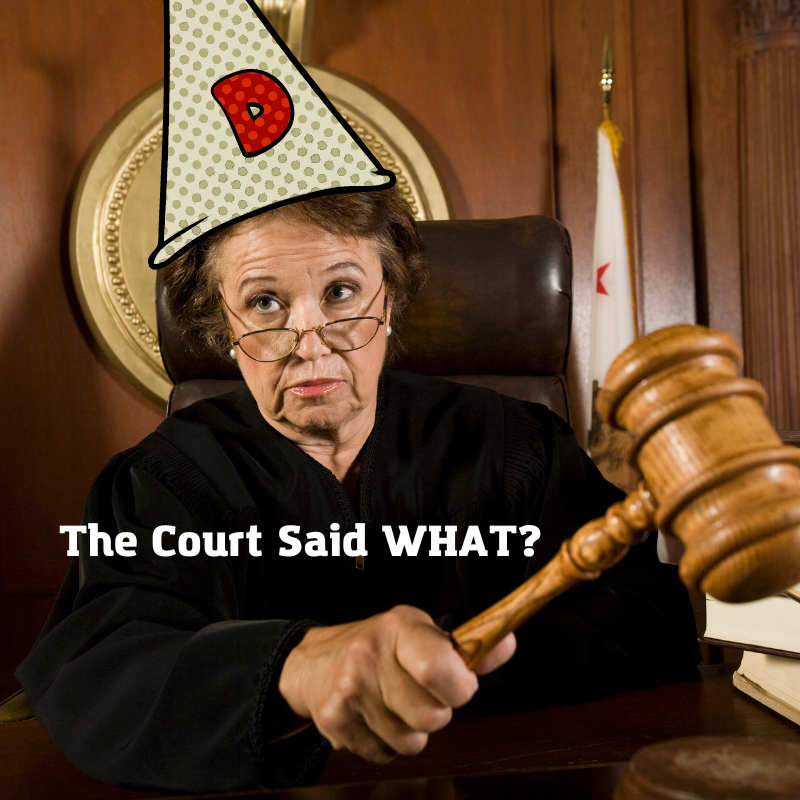
B.L.U.F.A District Court judge decides that it isn’t law that is being questioned but facts.
In the Beginning
—Oregon Firearms Federation, Inc. v. Brown, No. 2:22-cv-01815, slip op. at 2–3 (D. Or.)
The key takeaway is genuine disputes of material fact
. Post Bruen there is no real material fact to be determined with regard to presumptively protected conduct. This case is a challenge to Oregon’s measure 114, which contains a LCM ban.
Analysis
Part of this is language is designed to allow the court to deny a summary judgement. The court shall grant summary judgement if the movant shows that there is no genuine dispute as to any material fact and the movant is entitled to judgement as a matter of law.
—Rule 56. Summary Judgment, LII / Legal Information Institute, (last visited Jun. 1, 2023). This means that if the court says there are material facts to be discovered at trial, then no summary judgement can be given. Thus, the language above.
I hate that we keep hearing this Bruen dispensed with the two-step, means-end test to assess the constitutionality of firearms regulations followed by courts in the wake of District of Columbia v. Heller, Instead, Bruen creates a different two-step analysis, one rooted in the “Nation’s historical tradition of firearm regulation.”
—Order O.F.F. v Brown ECF No. 216, No. 2:22-cv-01815, slip op. at 4 It isn’t a replacement for the old means-end two-step shuffle.
Heller clearly said that it was text, history and tradition that determined if a law was constitutional. The state and the courts then changed that to be “or if the state has a (good?) reason.”.
Here we get that magic word game If a court finds that the conduct at issue is covered by the plain text of the Second Amendment—which includes finding that the weapon in question is “in common use today for self-defense”
—id.. This is not what was actually said.
—District of Columbia v. Heller, 467 U.S. 837, 2786 (2008)
“In common use for lawful purposes” is not the same as “in common uses for self-defensive.
Here is where the courts are getting this “for self-defense”:
—New York State Rifle & Pistol Assn., Inc. V. Bruen, 142 S.Ct. 2111, 2134 (U.S. 2022)
Here, the Bruen Court is saying what the conduct is that the petitioners (good guys) want to do. This is not a limit on what they are allowed to do, it is a statement of what they want to do.
“Is it ok if I walk to the beach?” “Yes”. This does not mean that I can only walk to the beach.
The court, in this case, is claiming that it is an “only” this act that is protected.
—Order O.F.F. v Brown ECF No. 216, No. 2:22-cv-01815, slip op. at 4–5
The plaintiffs (good guys), have it right here. Once an arm is found to be in common use for lawful purposes, the question is answered. Any regulation that bans/limits access to that arm is unconstitutional.
—id. at 5–6
And more of the same …
Conclusion
This court is attempting to turn Bruen on its head. Under Bruen, once the conduct implicates the plain text of the Second Amendment, that conduct is presumptively protected. The state must then offer history and tradition to justify their current regulations.
On the other hand, if the conduct being regulated is a ban, the court need not go any further. Only arms that are dangerous and unusual
—Bruen, 142 S.Ct. at 2119 can be banned. If an arm is in common use for lawful purposes, it is by definition not “unusual”.
The only questions that the court needed to answer are simple:
- Are magazines arms? Yes
- Does the regulation impose a ban? Yes.
- Are they in common use? Yes.
And with that, the summary judgement should have been granted.
Bibliography
I also need to look into how other pages are cited. I think part of the problem is that I don’t have the correct data in my citation system.

These citations are great! I am sure it will help me organize and collect proof when someone asks me for a source and I have to try and remember where I got some factoid or story.
The court really with do a Olympic level gymnast routine to twist things.
I’m pretty damn tired of activist judges twisting the language of the Supreme Court to ‘justify’ their continued infringements.